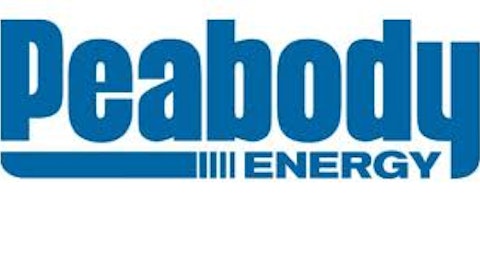Duke Energy Corp (NYSE:DUK) recently decided to stop development on a nuclear facility in Florida and to retire some coal assets. It’s looking to build gas plants instead. This is good news for natural gas and coal.

The second quarter seemed to continue that trend, however the weak results were largely driven by write offs. The biggest being over $380 million for the closure of a nuclear facility and the cessation of the development of another. Merger Integration costs, related to the acquisition of Progress Energy, were also a drag. Still, management continues to project earnings of $4.20 a share to $4.45, excluding such items.
Getting out from under uncertain and high-cost nuclear projects is actually a part of the company’s Progress Energy integration process. That merger materially changed the company’s makeup, creating the largest U.S. utility and shifting Duke Energy Corp (NYSE:DUK)’s business more toward the regulated end of the spectrum. Cost savings are the focus for the near future.
That said, income investors looking for a large utility should take a look. Duke Energy Corp (NYSE:DUK) has notable businesses in the Carolinas and Florida, warmer states that should see continued population growth as baby boomers retire and head “south.” Moreover, despite the shift out of nuclear, the company will still be building new power plants. That should lead to rate increases and higher revenues and earnings over the long term.
New gas plants
In Florida alone, the company is examining adding over 1,100 megawatts of natural gas power plants. It is also set to close nearly 900 megawatts of “unscrubbed” coal generation. This continues the industry’s long-term shift toward cleaner burning natural gas. That’s a good thing for the demand side of the equation for the fuel. This trend, along with the use of natural gas to power vehicles and the increasing push to export it, should help to support natural gas prices over the long haul.
That, however, is a mixed blessing for utilities since higher natural gas prices means paying more for a fuel that is being increasingly used for power generation. In fact, higher gas prices is why each of the first four months of this year saw a year over year decline in the use of natural gas, according to the U.S. Energy Information Administration (EIA). Coal use, on the other hand, was up in each of those months.
The closure of older coal plants without pollution control systems (scrubbers) on the surface looks bad for coal. However, it isn’t. Power companies run their plants to optimize their cost structure, so coal plants were used less as natural gas prices fell. In fact, Arch Coal Inc (NYSE:ACI) estimates that the coal plants that are expected to survive the plant-closure trend operated at just 60% of capacity in 2012. That means that these plants will just be run closer to capacity to make up the slack of closures. That will, in turn, require more coal if gas prices rise. The increased use of coal through April is a clear example of this dynamic.
Arch has a notable position in the low cost Powder River Basin (PRB) area, which should serve it well as U.S. coal demand rebounds. In fact, Peabody Energy Corporation (NYSE:BTU) estimates that PRB coal is competitive with gas priced as low as $2.50 per mmBtu. It, too, has a sizable position in the PRB region.
Both companies are also involved in the Illinois basin, which Peabody believes can compete with gas priced as low as $3.25 per mmBtu. So, from a domestic demand standpoint, Arch and Peabody look set to benefit as increased demand leads natural gas prices to rise over the long term. Note, too, that both serve the metallurgical coal market, which will benefit as demand for steel increases around the world, but particularly in developing markets like China and India.
A pair to watch
Of the pair, Arch is the riskier option. It took on notable debt to expand in the met coal space at the top of the market. It’s focusing on saving money and paying off that debt. However, as coal demand recovers, paying down debt will become that much easier. With a beaten down share price, Arch offers notable turnaround appeal.
Peabody, meanwhile, is a globally diversified coal miner, with about half of its business coming out of Australia. That gives it a proximity edge with regard to serving high-demand Asian markets. More conservative investors should consider this industry giant, though it doesn’t possess as much upside potential.
Both companies, however, are going to report weak results in 2013 even if coal prices start to rebound. That said, view 2013 as a transition year. Next year should see improvement on the top and bottom lines and fairly easy earnings comparisons. For really conservative investors, though, big utility player Duke Energy Corp (NYSE:DUK) might be the better choice as it integrates its recent acquisition.
The article Another Nuclear Power Plant Bites The Dust… originally appeared on Fool.com.
Reuben Brewer has no position in any stocks mentioned. The Motley Fool has no position in any of the stocks mentioned.
Copyright © 1995 – 2013 The Motley Fool, LLC. All rights reserved. The Motley Fool has a disclosure policy.





